Ever since the early ’80s in our two Edam shops and also some years later in Amsterdam, our specialisation in Dutch costume jewellery and historical Dutch costumes led to requests and ideas to start developing our own collection of chintz fabrics, based on antique documents from private- as well as Dutch museum collections.



At first it was the ladies of Spakenburg Bunschoten, Marken and the various historical associations who bought chintz fabrics for their traditional costumes. Later, at the beginning of the ’90s the first patchers made tentative approaches. Using various historical 18th and 19th century traditional costumes and authentic documents from museums primarily in the Netherlands but also in France, over the years we have tried to provide an interesting and affordable alternative in the form of the Den Haan & Wagenmakers collection.
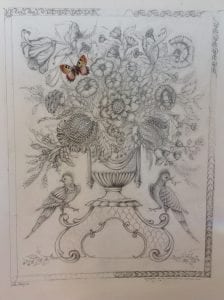
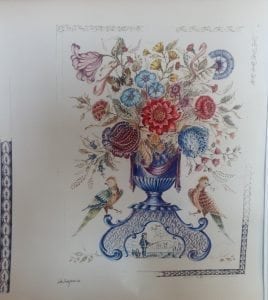

Floral vase with chintz flowers, design Willem Rudolf den Haan. From left to right, 1. pencil drawing. 2. hand painted drawing. 3. By the engraver digitally adapted original drawing, nrs. 1 and 2. . The engraver has reduced and devided the design into 12 colours / screens total. This is the maximum number of cylinders that fit into our rotation printing machine.
Design Willem Rudolf den Haan.
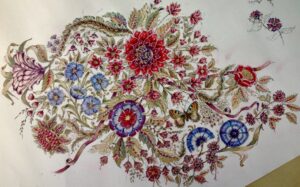


Corresponding border motif with the matching chintz flowers from the vase design. Right the pencil drawing, in the middle the digital adaptation by the engraver ready for the screens and the hand painted pencil drawing. Left above painted sketch fantasy for all over pattern, 1 repeat.
Design Willem Rudolf den Haan.
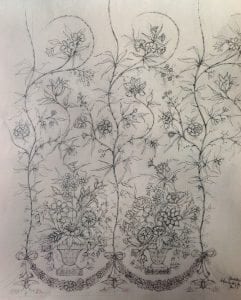
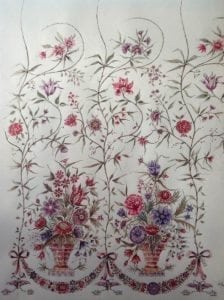
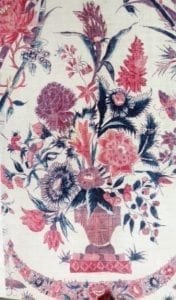
Fantasy for border fabric inspired by an 18th century cotton chintz printed and painted in India. Left pencil drawing, in the middle the pencil drawing hand painted and right the original chintz fragment. Design Willem Rudolf den Haan.
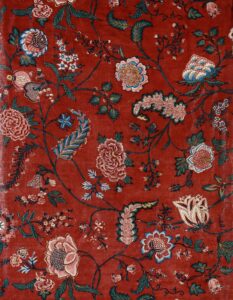
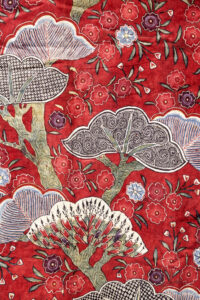
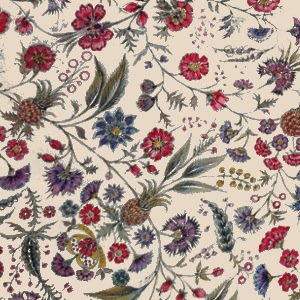
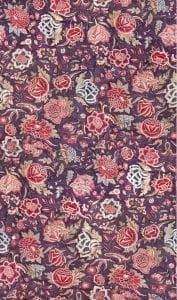
Speaking of reproduction materials, it is not the case that an original document can be transferred one-on-one to a printing template using photo techniques. The original antique pattern is smaller in rapport or it repeats itself in a smaller, different format than what is common with modern printing techniques today. ” Pulling apart or stretching” a pattern or design is almost never an option and the only correct solution is therefore to redraw te design an fill in the open areas created by the rapport enlargement with your own imagination. The edit is indeed based on the original design of motif, but because of the new additions and other adjustments alone, one can no longer speak of a real reproduction. In my opinion, this can also affect the copyright per editing.
Rudolf den Haan
Designer Dutchfabric.nl collecion